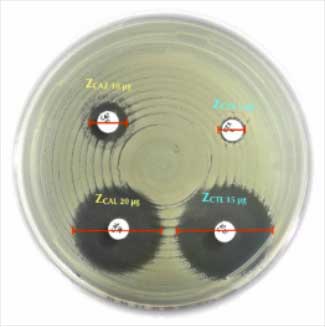Liofilchem® Ertapenem ETP, Antimicrobial Susceptibility Discs, 10 µg
Catalog No :
CAS Number :
Brand :
In Stock
Specifications:
| Application | Microbiology |
| Storage Temperature | 2-8°C |
| Product Type | Antibiotic Disc |
| Product Brand | Liofilchem |
| Product Grade | Microbiology grade |
Liofilchem® Ertapenem Discs are standardized antimicrobial susceptibility testing (AST) tools designed for the evaluation of bacterial resistance to ertapenem, a carbapenem antibiotic. These discs are widely used for phenotypic detection of carbapenem susceptibility in Enterobacterales, Pseudomonas spp., and other Gram-negative pathogens, aiding in the effective selection of therapeutic regimens.
Key Features
- Active Agent: Contains 10 µg of ertapenem per disc.
- Reliable and Accurate: Provides reproducible inhibition zones for determining susceptibility or resistance.
- Global Standards Compliance: Aligned with CLSI and EUCAST guidelines for AST.
- Broad Clinical Application: Effective for testing Gram-negative pathogens, including carbapenemase-producing Enterobacterales (CPE).
- Easy Handling: Suitable for use with standard disc diffusion methods on Mueller-Hinton agar.
Technical Specifications
| Parameter | Details |
|---|---|
| Disc Content | 10 µg of ertapenem |
| Recommended Media | Mueller-Hinton Agar |
| Incubation Conditions | 35–37°C for 16–20 hours |
| Zone Diameter Standards | CLSI/EUCAST breakpoints for interpretation |
| Storage Conditions | -20°C for long-term; 2–8°C for short-term |
| Shelf-Life | As indicated on packaging |
Test Procedure
- Preparation:
- Prepare bacterial suspension equivalent to 0.5 McFarland standard.
- Spread evenly on a Mueller-Hinton Agar plate.
- Disc Placement:
- Place the ertapenem disc (10 µg) on the inoculated agar using sterile forceps or an automated dispenser.
- Ensure adequate spacing between discs to avoid overlapping inhibition zones.
- Incubation:
- Incubate the plate at 35–37°C for 16–20 hours under aerobic conditions.
- Result Interpretation:
- Measure the diameter of the inhibition zone in millimeters using a ruler or automated zone reader.
- Compare results against CLSI/EUCAST breakpoint tables for interpretation.
Result Interpretation
| Zone Diameter (mm) | Interpretation (CLSI) | Interpretation (EUCAST) |
|---|---|---|
| ≥ 23 | Susceptible | Susceptible |
| 20–22 | Intermediate | Intermediate |
| ≤ 19 | Resistant | Resistant |
Quality Control
| Control Strains | Expected Zone Diameter (mm) |
|---|---|
| Escherichia coli ATCC® 25922 | 26–32 |
| Klebsiella pneumoniae ATCC® 700603 | 20–26 |
| Pseudomonas aeruginosa ATCC® 27853 | 17–23 |
Applications
- Detection of Resistance:
- Identifies ertapenem-resistant strains and differentiates carbapenemase-producing organisms.
- Guidance for Therapy:
- Aids clinicians in selecting appropriate carbapenem treatments.
- Surveillance Programs:
- Monitors antimicrobial resistance trends in healthcare and environmental settings.
Advantages
| Feature | Benefit |
|---|---|
| Standardized Concentration | Ensures reproducible and accurate results. |
| Cost-Effective | A practical tool for routine susceptibility testing. |
| Ease of Use | Compatible with manual and automated workflows. |
Comparative Analysis
| Feature | Liofilchem Ertapenem Disc | Other Brands |
|---|---|---|
| Compliance | CLSI/EUCAST | Varies |
| Stability | Excellent | May vary with storage conditions |
| Precision | High | Comparable |
| Cost-Effectiveness | Affordable | May vary |
Standard References
- CLSI M100 Performance Standards:
- Provides updated breakpoints and QC ranges for ertapenem testing.
- EUCAST Guidelines:
- Includes specific guidance on carbapenem susceptibility.
- ISO 20776-1:
- Describes disc diffusion methods for AST.
- Scientific Literature:
- Studies evaluating the efficacy of ertapenem for multidrug-resistant infections.
Conclusion
The Liofilchem® Ertapenem (ETP) Antimicrobial Susceptibility Discs, 10 µg offer a standardized, accurate, and reliable method for detecting carbapenem resistance. Their compliance with global standards ensures they are an essential tool for microbiology laboratories addressing the challenge of antimicrobial resistance.
4o




 0
0
